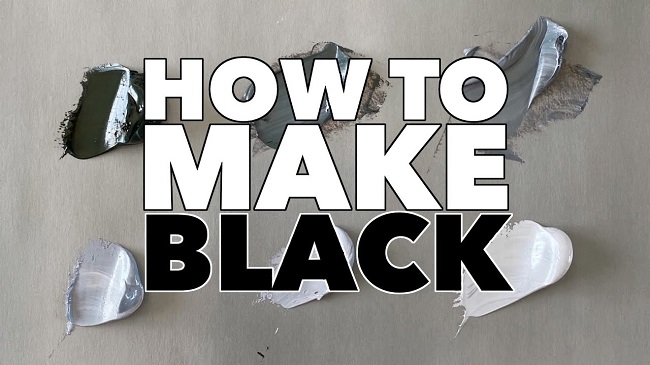Did you know that you, as a painter, may get by without purchasing a tube of black paint? Did you know that many famous artists don’t even buy black paint by the tube but rather create their own?
Here I’ll explain what colors combine to form black so you may utilize it in your own artwork. Learning to produce black paint color will save you money in the long run because you won’t have to buy a new tube of paint every time you run out.

The black you get out of a tube won’t compare to the black you mix yourself; it will be considerably more colorful and dramatic.
How To Make Black Paint
So, you can make black paint by combining several other colors, and you’re not restricted to just a few options. Any of these can be used in place of black acrylic, or to create a more interesting shade of black.
Mix Primary Colors
Create black paint by combining equal parts of blue, red, and yellow. You may get somewhat varied blacks by experimenting with different reds, blues, and yellows. To create unique shades of black, you can also play around with the proportions of the fundamental colors.
Artists on a tight budget, or those just starting out, can rejoice at this discovery, as they need only purchase four primary colors to create an infinite number of shades and tints. White is the fourth color.
Mix Complementary Colors
Use the color wheel to find two colors that are complementary to each other. If you combine these two colors, you get black since they are complementary. If you look up at the color wheel, you can see that this is the same as combining the three primary colors.
The combination of red and yellow makes orange, blue and yellow make green, and purple and yellow make yellow. Quick, name the two hues that, when blended, create purple.
Mix Blue and Brown
This method of creating a black paint is quite efficient. The wonderful, deep black you get from mixing Burnt Umber and Pthalo Blue is much more interesting than the standard black you get from a tube.
Mix Blue and Brown
If you already have a can of black paint, you might think there’s no need in mixing more, but there are really several valid reasons to do so. If you intend to incorporate other colors into your painting, using pure black acrylic from the tube can result in a very harsh appearance. The “perfect” appearance of paint from a tube stands out.
When you make your own black paint from scratch, you get to choose exactly how it will look and how well it will blend with the other colors in your painting. If you really need to use black paint and have a tube on hand, dilute it with some of the other colors in the palette to make it more manageable. (Does softening perfection make sense as a slogan on a t-shirt?)
Tips For Mixing Black Paint
Paint colors are best blended with a palette knife. Brushes wear out faster when used for mixing paint. (There are moments when I veer off course. Shhhhh) Save little samples of the various black paints you create for future use.
A paper color chart is fine to retain, but I find that gessoing and painting on thick popsicle sticks is more convenient. That way I can compare the hues side by side before deciding which one to use. A small amount of white paint added to your black paint can make it appear more like a dark grey-black.
Conclusion
Black can be made by combining red, blue, and yellow, the fundamental hues. If you combine equal parts of red, blue, and yellow, you’ll obtain a dark black. Use the deeper hues as specified in the color table above; using lighter red and blue will result in brown. To achieve a more bluish black, simply increase the amount of blue used to create the hue.









































